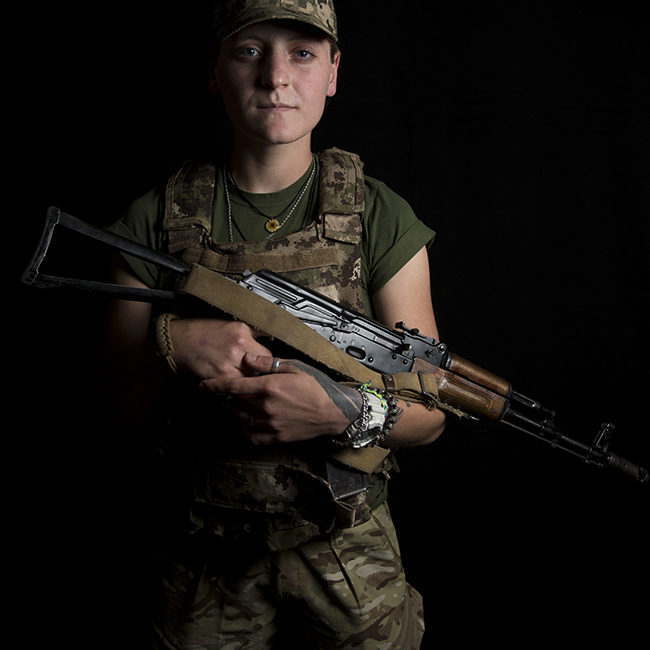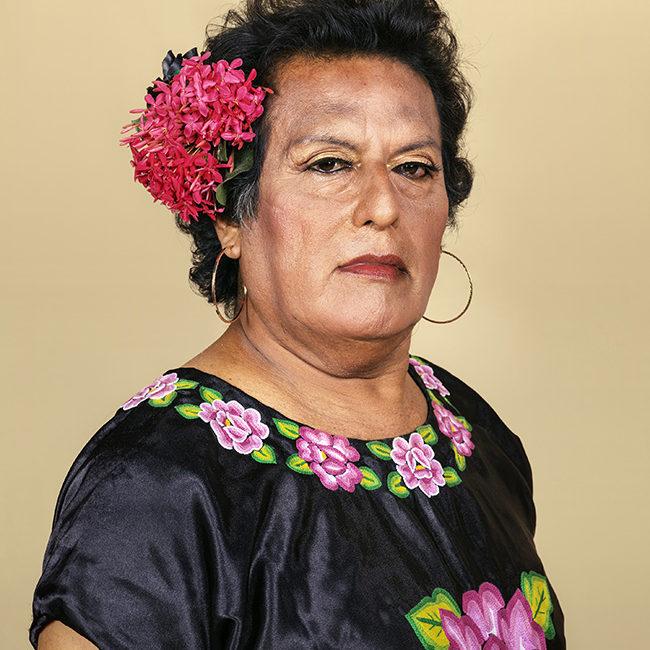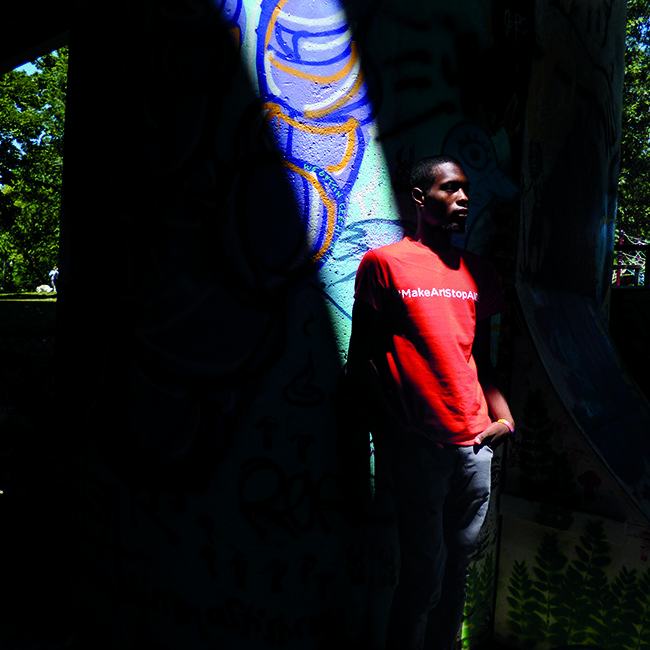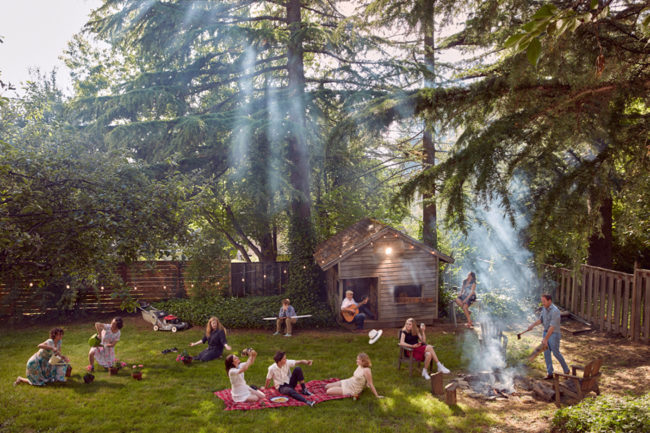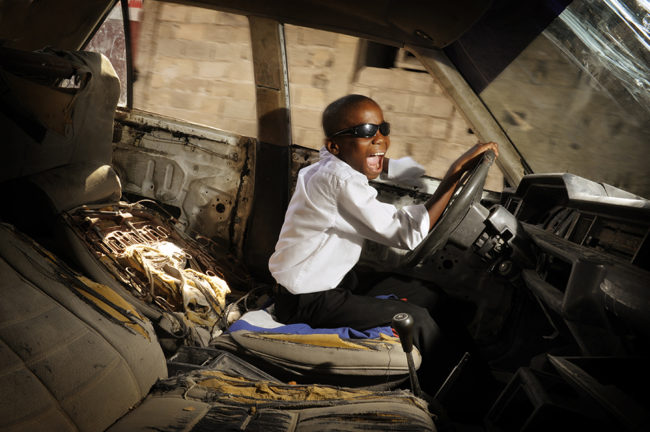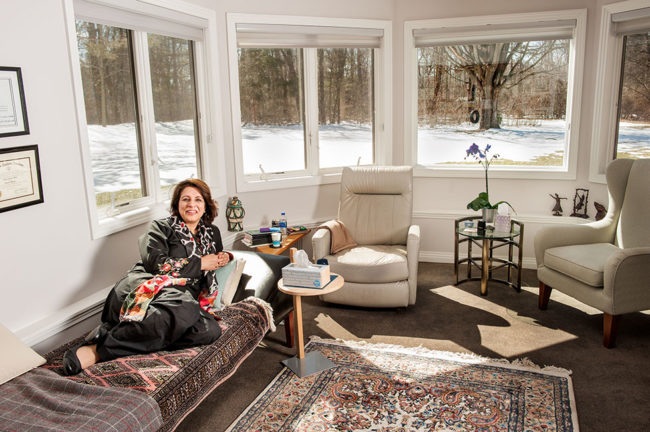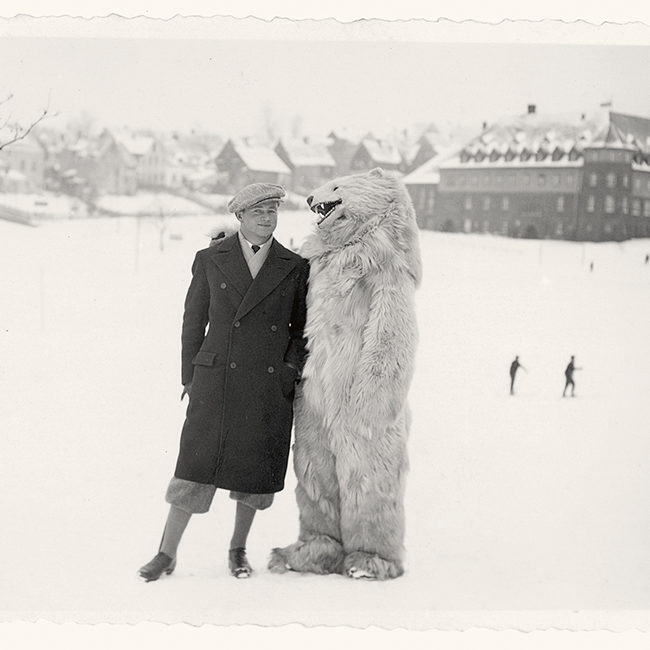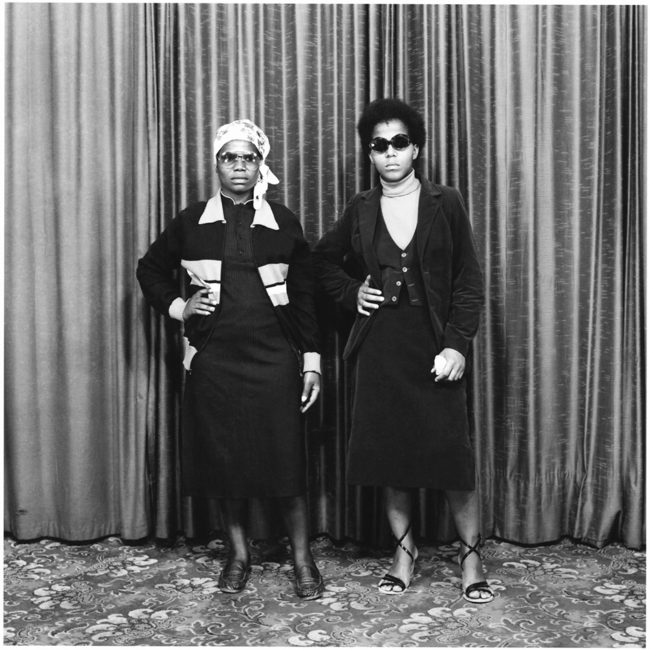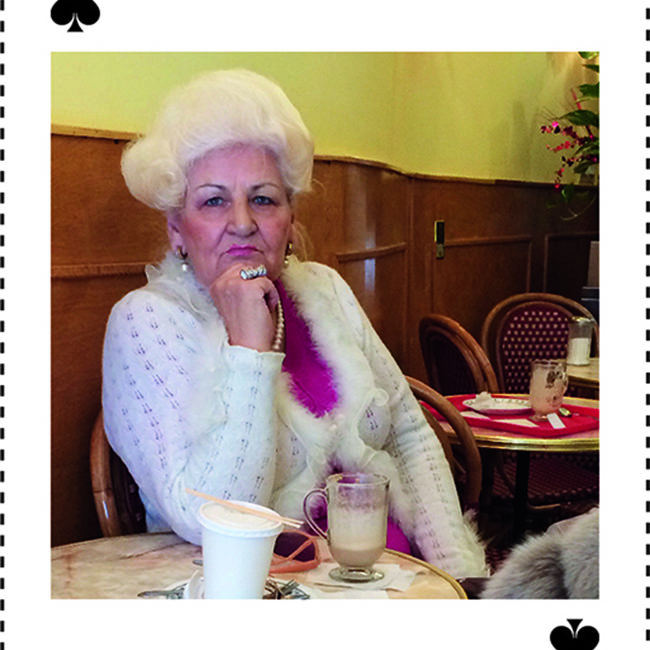The first solo exhibition featuring Michael Joseph’s series Lost and Found will open at Daniel Cooney Fine Art on Thursday, February 28. On April 6, the gallery will host a conversation between Joseph and Richard Renaldi. Joseph’s portraits represent a subculture of men and women who travel the United States by train-hopping and hitchhiking. The transient lifestyle of these people, known as travelers, has its own history, language, and code of conduct. Joseph, who has been photographing travelers for the past nine years, talks to PDN about creating Lost and Found and what he hopes viewers will take away from the images.
PDN: Why did you choose to photograph your subjects against a white background, excluding the environment?
Michael Joseph: It was important for me to engage the viewer by making the portraits close. I wanted the viewer to look into the eyes of the subjects. I wanted the texture in their clothing and all the details, such as scars, tattoos, and bruises to be readable, offering clues to the subject’s identity and history. Because the existence of my subjects is often ignored, or discredited, I wanted to isolate the subject, making the portraits more formal, such as a president or dignitary would be painted or photographed. This is a way to signal to the viewer that these subjects are to be taken seriously and elevate their existence and importance. Eliminating the environment allows me to achieve these goals.
In addition, to pin a traveler down to one “environment” is counter to the way they live. The reality is that their environment is mercurial, and they aren’t defined by just one place. People often think I’m using backdrops, but I make portraits on the street using doorways, walls, parking garage enclaves… you name it.
If they have to use what they find to survive, then I have to shoot by the same rules, using whatever is available.
PDN: I love this description of the travelers from your essay: “Reminiscent of children of the 1930s Dust Bowl era blended with roots in the punk squatter subculture…” Can you say more about this characterization?
MJ: The look and history of the traveler is uniquely American. Train-hopping was common among the 1930’s Dust Bowl Era hobos as a means of transit. Many young kids between the ages of 16 and 25 left rural homes to find work in cities and abroad. They often followed harvest seasons around the country and obtained transient jobs. The modern-day “traveler” still does this.
Hobos used symbols to communicate to other hobos safe places to stay and avoid the “bulls” or railway cops. Those symbols can be found as tattoos on many modern-day travelers. For example, a circle with two arrows through it means “get out quick.” Post WWII, the Beat Generation became the next influence seen in today’s modern-day traveler. That movement rejected standard values and explored the human condition; Beats rejected materialism and supported experimentation with drugs. The movement produced influential works like Jack Kerouac’s On the Road.
Today’s traveler rejects society in much the same way and views American culture as a prescribed way of living, rooted in excessive consumption. They reject both the left and right political views, often believing that government is corrupt, period. The mid1960s-70s produced the Hippie which was the next iteration of the “traveler,” and the locations of Haight-Ashbury in San Francisco and the Village in NYC still remain popular destinations for travelers. The socialistic viewpoints of many travelers perhaps came from this generation; the view that what is earned by one can be shared by all and that we are all “family.” The next evolution was the Punk Squatters of the 1980s and 90s often found in the Lower East Side or East Village of NYC. Many travelers listen to punk or “crust” music, sew together patchwork clothing with dental floss and find squats all over the United States to live in for periods of time before moving on to the next location. Art, music and creativity became important during this period and remains valuable to most modern-day travelers. It is my hope that my work serves as a document to today’s traveler.
PDN: How did you first encounter the travelers and what did it take to earn their trust?
MJ: The first traveler I photographed I encountered on the sidewalk in Las Vegas in 2011. I saw a man with a striking look and literally stopped the cab I was in to jump out and make his portrait. His portrait became part of a working portfolio I showed to other strangers I would ask to photograph on the street. Surprisingly, other people knew who this man was.
By a twist of fate, I run into him again in Chicago and then again in New York City. We became friends and he introduced me to other travelers. We spent a weekend together. I found myself fascinated by travelers. I was genuinely inquisitive and willing to listen. I believe they were able to sense compassion and empathy. I think they sensed I was able to look beyond their often rough and dirty exterior to see the person beneath. They trusted me with secrets that, to this day, I will not share. As with any relationship, the trust took a long time to build.
PDN: What is the biggest personal or photographic challenge you’ve faced while making this work?
MJ: The biggest photographic challenge was how to portray a subculture in a way that is neither romanticized nor pitied. The interpretation must lay somewhere in-between. I don’t want the viewer to be sorry for travelers when you look into their eyes, but I don’t want you to visualize an easy, free life either. It is adventurous, but hard. There is sadness, but also joy. The biggest personal challenge was suffering the loss of subjects along the way. I was ready to handle the adventure and be “along for the ride” but I wasn’t ready to help organize memorials or meet parents of travelers I had known for years after they had passed. The narratives of their lives, both in life and death, eventually became intertwined with mine.
PDN: What are you hoping viewers will take away from the work?
MJ: If you feel a sense of pity, let it be a reminder to accept those with differences – you might not be open-minded. If you feel a sense of envy, let it be a reminder to engage and connect with the world – you might be stuck in a repetitive, unexplored life.
I hope this work helps viewers to realize that there are other people and other cultures, living in different ways all around us, yet they might go unseen. If we open our eyes to engage and connect, life is richer. By living outside of conventional lines, travelers are finding their own identity before society tells them who they should be. While most of us try to “live for today,” travelers are doing it. The traveler force us to ask: What is better? A life a short life that is lived fully or a long life that is barely lived at all?
PDN: Is there something you think is important for viewers to know that I haven’t asked?
MJ: I ask that people keep an open mind when viewing my portraits of travelers or even meeting travelers in real life. While their lives can be physically risky, painful, and rampant with substance abuse, they also filled with beauty, soul, and an exploration of the human condition. They are often well spoken, artistic, and kind. It is my intention that by exploring the lives of others and how they live, we will come to question our own.
–Sarah Stacke
Lost and Found
By Michael Joseph
Daniel Cooney Fine Art
February 28 – April 13, 2019
Michael Joseph will be in conversation with Richard Renaldi on April 6 at 3:00.
Related Articles
Portrait Photographers at Home and on the Road
Avedon in Texas
Daniella Zalcman on Documenting an Off-the-Grid Eco-Village (for PDN subscribers; login required)
